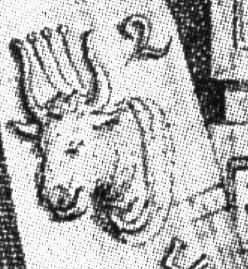|
Generally the bull is considered as fertiliser and holder of vitality. A bull carrying a "sundisc" beetween his horns, was adored by the Egytians as the early god Ptah and later put on a par with Osiris. Simultaneously the bullhead here could be an allusion to the initiating rituals of the Mithras religion, which are also at hand in another way for the candidates of the "Magic Flute". According to a Persian tradition, the ornamentation of the bullhead can be interpreted as grain ears, because grain grew out of the spinal cord of the killed bull. This points out to Zoroaster, better known as Zarathustra, who is a pattern for the high priest Sarastro in the "Magic Flute".
|
